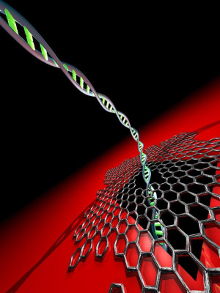Genome machine brings medical future to Australia
 A major Australian research firm has acquired a machine that can sequence an entire human genome for relatively little cost.
A major Australian research firm has acquired a machine that can sequence an entire human genome for relatively little cost.
Human genome sequencing will transform medicine when it is widely usable, by specifically identifying the predispositions and underlying elements unique to every person, meaning treatments can be custom-designed and better targeted for an increased rate of success.
Sequencing and synthetic biology also promise to produce a range of new treatments based on the specific biological information of the patient.
This reality has been brought closer by the announcement that Sydney’s Garvan Institute of Medical Research has become one of the first in the world to acquire machines to sequence a whole human genome at a base cost below $US1,000.
The next level of genomic medicine and research has landed in Australia, promising widespread medical benefits, with significantly lower health costs, through early prevention and more effective treatments.
With the combined support of several donors, Garvan has purchased an Illumina HiSeq X Ten Sequencing System, which can fully sequence around 50 genomes a day, or 18,000 per year.
“I believe we have reached a tipping point where genome sequencing has become achievable on a broad scale,” said Professor John Mattick, Executive Director of Garvan.
Bringing about the medical future will take time, cooperation and care, but the research director says all are available to Australian science.
“Community and clinical education will be a vital part of the process, and we’ll work closely with clinicians on how to commission, use and interpret data,” Mattick said.
“We recognise there are many issues yet to be addressed, and protocols to be developed, but it is widely expected that genomic information will progressively inform and ultimately transform medicine and health.
“We will start by using our new system for large-scale research projects and for problem-dependent diagnostic purposes, specifically the routine analysis of cancer biopsies and people with genetic disorders. We will also begin to analyse the genomes of people suffering from other conditions, such as diabetes and Parkinson’s disease,” said Professor Mattick.
Garvan Associate Professor Marcel Dinger has had his entire genome sequenced, which alerted him to a likely allergy to a common anaesthetic. He has now added the allergy to his personal electronic health records to alert any future anaesthetists.
“Generating DNA sequences will be less of an issue than analysing them in a way that is meaningful to clinicians, so we are putting a lot of effort into transforming the primary data into clinical grade reports,” Dr Dinger says.
“It is an enormous task, one that can only be undertaken by a leading-edge research institute with a mission to bring research advances rapidly to patients. It will also enable us to partner with similar efforts internationally.”
“The real power of sequencing comes from volume. It provides the interpretative power that comes from being able to compare each newly sequenced genome with tens of thousands of other genomes, and pinpoint the relevant variations.”







 Print
Print